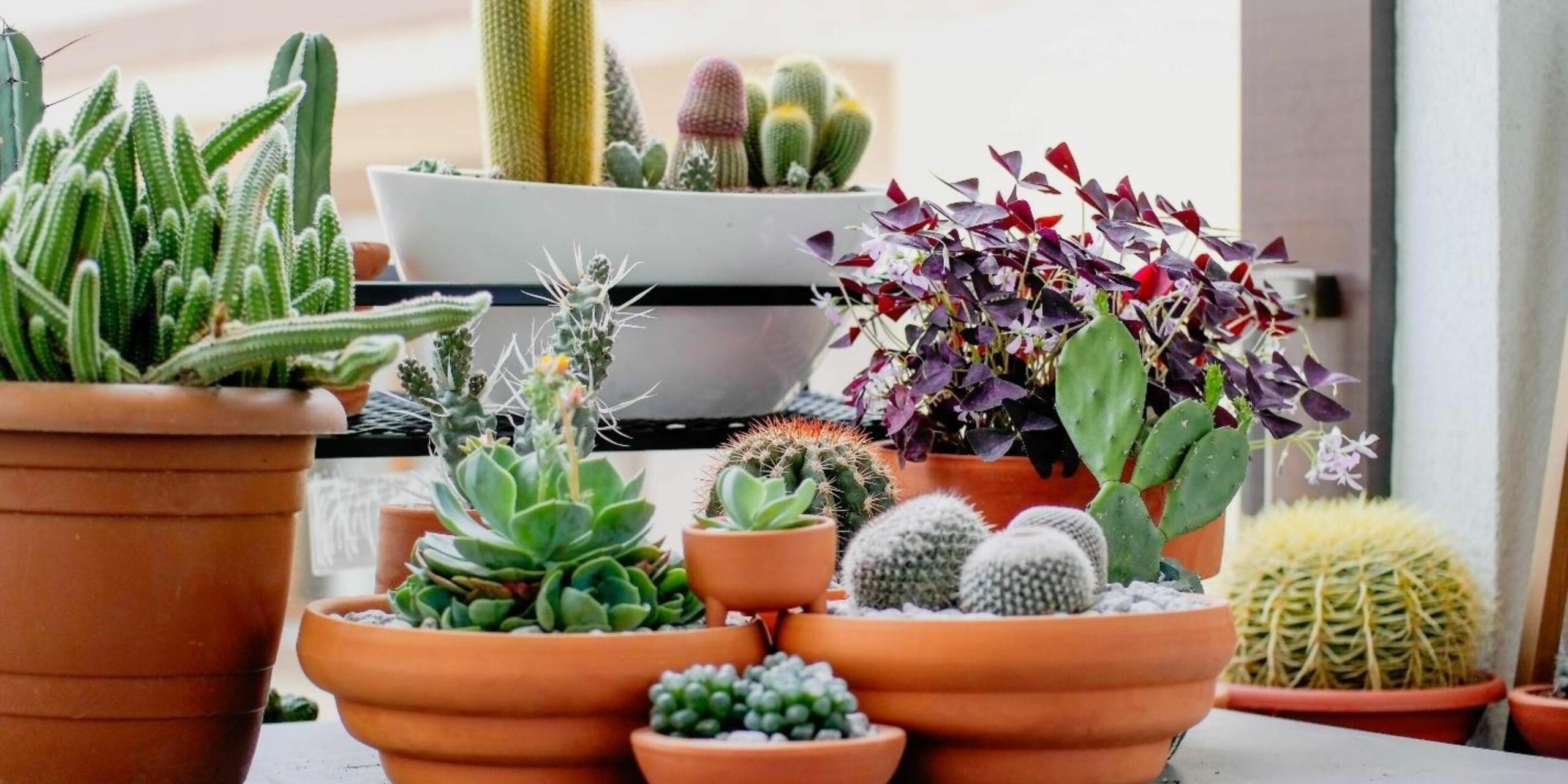5 Best Cacti and Succulents to Buy in the Winters
If you are planning to bring some cacti and succulents at home then winter is the perfect time to do so. These tiny beauties can brighten up your space instantly with varied colors, shapes, and sizes.
Most succulents do well in the Indian winters as long as they get 6-8 hours of bright indirect sunlight, watering once a week or ten days, well-draining soil, good air circulation, and protection from frost. They are low-maintenance, can easily survive drought, and thrive well on neglect.
Here are five of the best cacti and succulents to buy in the winter, along with their care tips:
Prickly pear cactus (Opuntia)
Prickly pear cactus or Opuntia is a popular variety of cactus grown in many homes. It originated in North and South America and from there traveled to the rest of the world. It has characteristic flat, fleshy, oval pads covered with spines. If kept in direct sunlight it can even produce pretty flowers and flavorful edible fruits.
Opuntia needs bright direct sunlight of at least 6-8 hours, watering once every 2-3 weeks, and a well-draining soil mix.
Zebra plant (Haworthia)
 The Zebra or Haworthia is a slow-growing succulent native to South Africa. With rosettes of fleshy, green leaves covered in white strips or spots it resembles mini aloes. It is a common indoor succulent that can tolerate low light conditions better than most.
The Zebra or Haworthia is a slow-growing succulent native to South Africa. With rosettes of fleshy, green leaves covered in white strips or spots it resembles mini aloes. It is a common indoor succulent that can tolerate low light conditions better than most.
Place it in a bright spot that receives indirect sunlight, as direct light can burn its leaves. Water it moderately only when the top inch of the soil is dry. Fertilize it once a month with a liquid fertilizer during the growing season (spring and summer).
Burro’s tail (Sedum morganianum)
 Burro’s Tail (Donkey’s Tail) is a succulent native to South Mexico. It is an adorable succulent that looks stunning in hanging pots with its trailing stems covered with plump, green leaves. It produces pink or red flowers in summer.
Burro’s Tail (Donkey’s Tail) is a succulent native to South Mexico. It is an adorable succulent that looks stunning in hanging pots with its trailing stems covered with plump, green leaves. It produces pink or red flowers in summer.
Grow it in a soil mix specially formulated for cacti and succulents and a small ceramic pot of about 4 inches or a hanging basket. It requires a sunny spot, but over-exposure to the sun can result in leaf drop. It does well with moderate watering only when the top inch of the soil feels dry. It needs some extra care while handling as the leaves can fall off at the slightest brush.
Panda plant (Kalanchoe tomentosa)
 The Panda Plant or Pussy ears is a gorgeous succulent that is native to Madagascar. It has soft, furry gray-green leaves with brown spots on the edges that resemble a panda. It does well indoors but just like any other kalanchoe it requires full sun to produce flowers.
The Panda Plant or Pussy ears is a gorgeous succulent that is native to Madagascar. It has soft, furry gray-green leaves with brown spots on the edges that resemble a panda. It does well indoors but just like any other kalanchoe it requires full sun to produce flowers.
It is a fairly low-maintenance plant that thrives indoors when placed in a bright sunny spot that gets indirect light. It grows well in a cactus potting mix, with moderate watering and a liquid fertilizer specially prepared for succulents once a month.
Jade plant (Crassula ovata)
 The Jade plant also referred to as Money Tree is native to South Africa. It is considered a lucky succulent because of its thick, glossy, oval leaves, that look like coins. It also produces white or pink flowers but it is very rare. Its woody but flexible stems make it ideal for creating beautiful topiaries of different shapes.
The Jade plant also referred to as Money Tree is native to South Africa. It is considered a lucky succulent because of its thick, glossy, oval leaves, that look like coins. It also produces white or pink flowers but it is very rare. Its woody but flexible stems make it ideal for creating beautiful topiaries of different shapes.
Light plays a crucial role for it to survive indoors. It requires 6 to 8 hours of bright indirect sunlight, the absence of which can result in leaf drop and stunted growth. It requires moderate watering and well-draining soil. Pruning is necessary to maintain its shape and prevent the stems from becoming leggy.
Here are some other blogs which make your Green Space more Greener!
- Gardening Calendar Blogs
- Sustainable Gifting Ideas
- Gardener Stories
- Garden Care Blogs
- Miniature Garden Decor
- Gardening Workshops
Have a look at some amazing Videos on Gardening that might help you!
- Tips on planting homegrown plants and creating art with them as a beginner.
- How to preserve, plant, and grow flower seeds in monsoon, winter, and other seasons.
- Growing different vegetables, winter vegetables especially, and tips and tricks to preserve.
- Preserving fruits such as strawberries, Papaya, watermelon, muskmelon, etc.
- Know all about microgreens using examples such as microgreen spinach, microgreen sunflower, microgreen mustard, microgreen flax, etc.
- Using gardening tools such as pots, trays, growing bags, moss sticks, watering cans, etc.
Here are some Workshops that might help you if you are new to Gardening!
- Convert your small space into a green jungle.
- How to upcycle DIY’s for home decor
- Watch our workshop on using biochemical enzymes instead of chemicals in gardening.
- Workshop on stepping towards sustainability.


